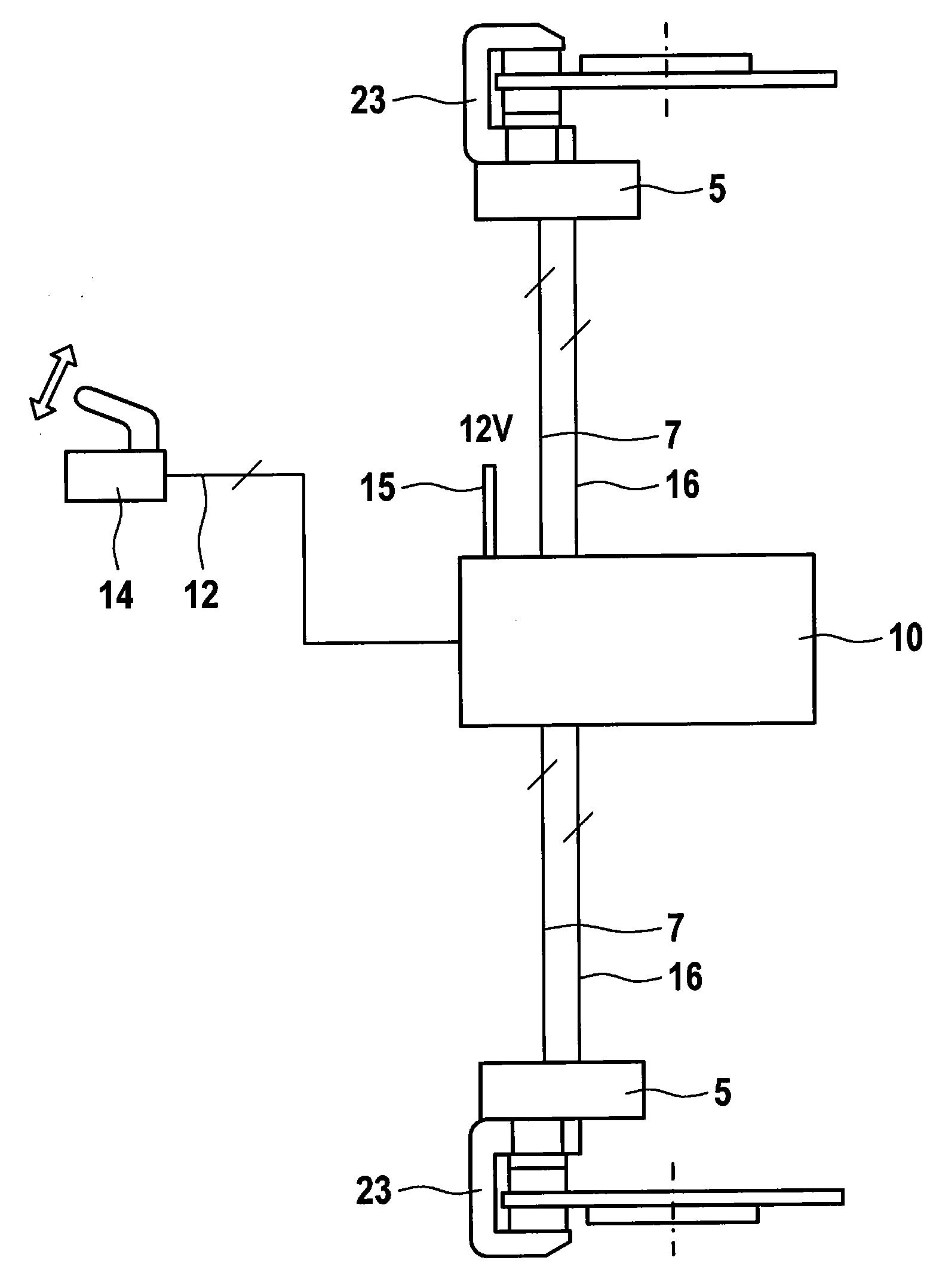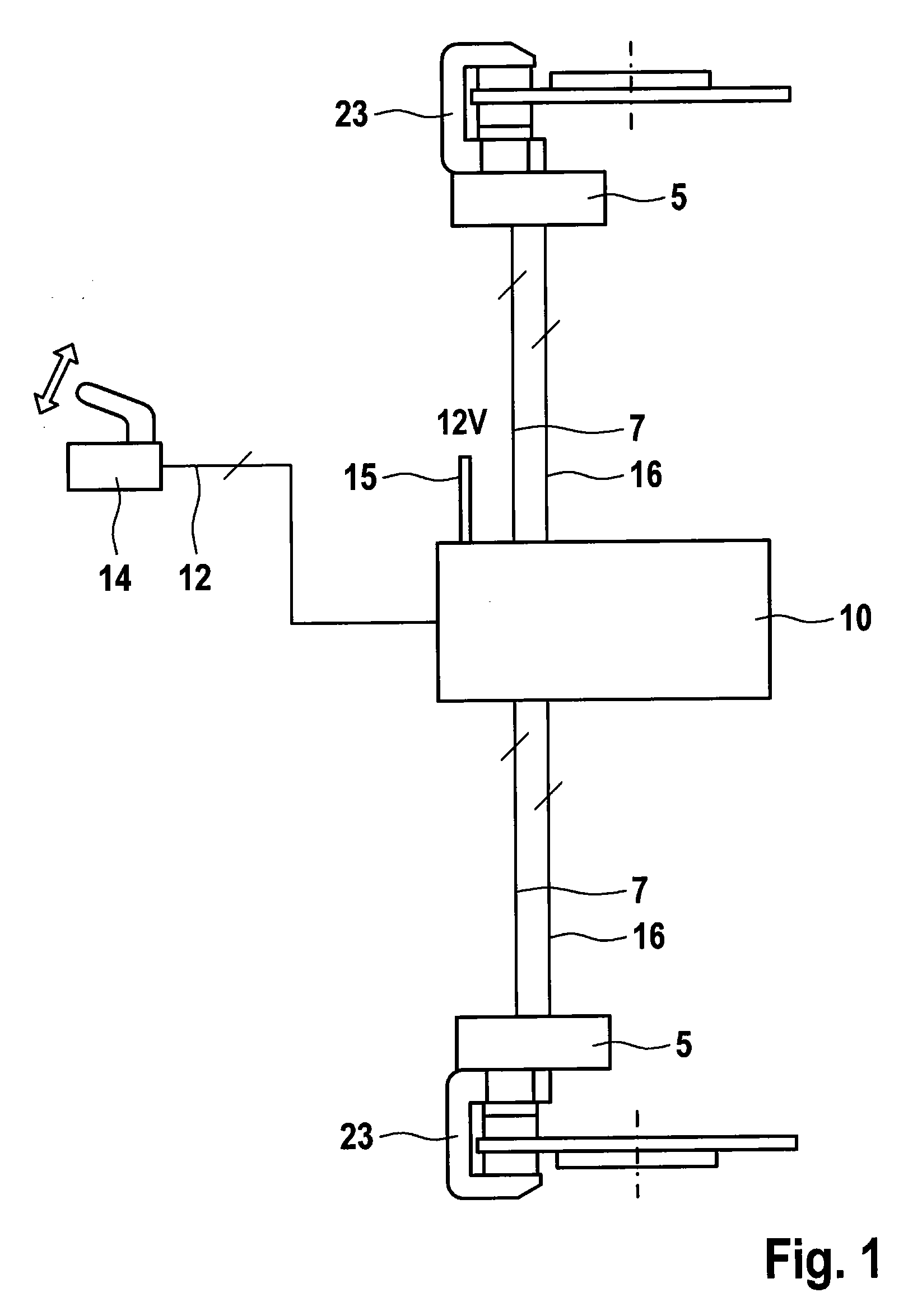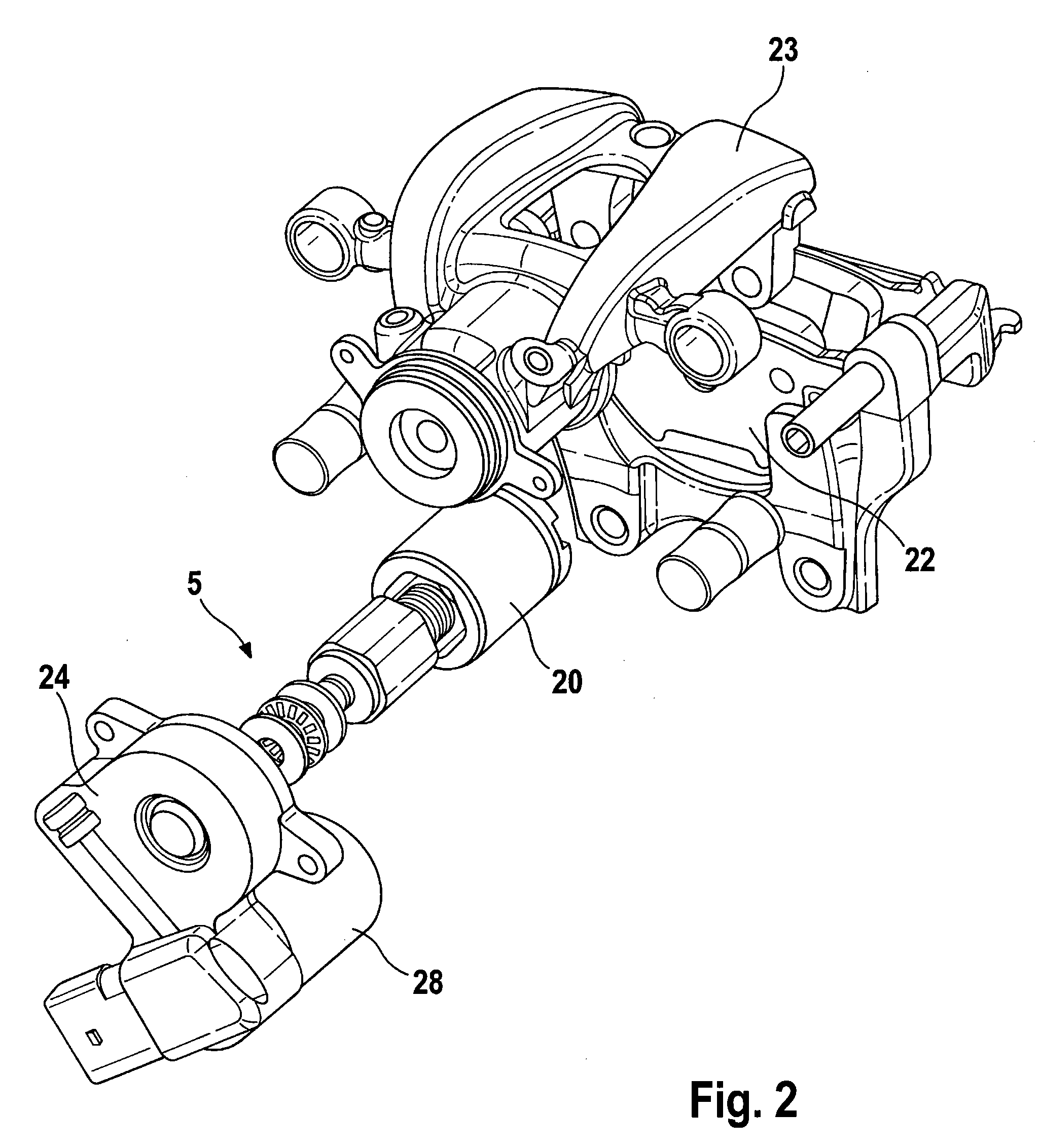Parking brake and method for operating same
a technology for parking brakes and brakes, applied in braking systems, instruments, analogue processes for specific applications, etc., can solve the problems of insufficient reliability of brake-by-wire brake systems, insufficient measurement of brake-application force, and insufficient operation of methods, etc., to achieve accurate setting of the desired brake-application force
- Summary
- Abstract
- Description
- Claims
- Application Information
AI Technical Summary
Benefits of technology
Problems solved by technology
Method used
Image
Examples
Embodiment Construction
1. Description of the Parking Brake According to Aspects of the Invention
[0033]The parking brake according to aspects of the invention which is illustrated in FIG. 1 for a motor vehicle has, for each wheel, an actuator 5 which is respectively connected to a control unit 10 via an open-loop / closed-loop control line 7. FIG. 1 also shows the connection of the control unit 10 via an (if appropriate multiple) open-loop / closed-loop control line 12 to the activation switch 14 of the parking brake with which the application or release of the parking brake can be initiated by the driver of the motor vehicle. The control unit 10 has a voltage supply 15 and is also connected in each case to the actuators 5 by a line 16 which transmits the temperature of the respective actuator 5 to the control unit 10.
[0034]FIGS. 2 and 3 show that each actuator 5 is provided with a spindle which is located in the hydraulically operated brake piston 20 and on which the rotationally secured nut moves with the ro...
PUM
 Login to View More
Login to View More Abstract
Description
Claims
Application Information
 Login to View More
Login to View More - R&D
- Intellectual Property
- Life Sciences
- Materials
- Tech Scout
- Unparalleled Data Quality
- Higher Quality Content
- 60% Fewer Hallucinations
Browse by: Latest US Patents, China's latest patents, Technical Efficacy Thesaurus, Application Domain, Technology Topic, Popular Technical Reports.
© 2025 PatSnap. All rights reserved.Legal|Privacy policy|Modern Slavery Act Transparency Statement|Sitemap|About US| Contact US: help@patsnap.com



